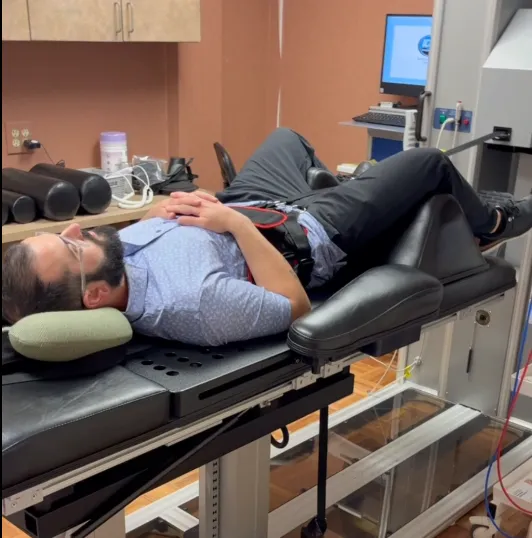Everything you need to know about Spinal Decompression.

Spinal Decompression vs. Chiropractic
Why Spinal Decompression May Be Your Best Bet Over Chiropractic.
The human spine, a marvel of bioengineering, is integral to our overall well-being. However, over time, a combination of factors can lead to debilitating spinal issues. While chiropractic care has been a go-to for many, the emergence of nonsurgical spinal decompression is shifting the narrative. Here's a deep dive into why spinal decompression might be a superior long-term solution compared to traditional chiropractic methods.

The Power of Nonsurgical Spinal Decompression:
What Is Spinal Decompression? Nonsurgical spinal decompression is a groundbreaking motorized traction technique designed to combat back pain. By gently elongating the spine, it recalibrates spinal force and positioning, leading to distinct advantages:
Promotion of Disc Healing: The procedure induces negative pressure within spinal discs. This draws herniated or bulging discs inward, facilitating the flow of oxygen and nutrients, essential for healing.
Significant Pain Alleviation: The strategic relief of spinal pressure often brings about marked pain reduction.
A Potent Alternative to Surgery: For many, this approach negates the need for invasive surgeries, offering a safer and often more effective alternative.
The Procedure:
Personalized Comfort: Patients lie on a specialized motorized table, with optimal comfort
ensured through harnesses.
Precision at Its Best: The treatment is directed by a computer, allowing for unparalleled accuracy in force and disc distraction angles.
Duration: Typically, a full treatment course spans 20-28 sessions across five to seven weeks, each session lasting 30-45 minutes. An investment of time that yields long-lasting relief. Treating times vary we urge you to contact us first to see what's right for your condition.
Who Should NOT get spinal decompression? Like any medical treatment, it isn't universal. Certain conditions, like pregnancy, tumors, and advanced osteoporosis, among others, may deem you ineligible. It's essential to consult a healthcare provider.

Chiropractic Care: A Brief Refresher:
Historically, chiropractic care has been the beacon for those with musculoskeletal issues. Primarily, it involves hands-on manipulation to adjust misaligned joints, hoping to restore alignment and bolster physical function.
Making the Case: Spinal Decompression vs Chiropractic:
Purpose: While both methods seek to provide relief, spinal decompression addresses the root cause at the disc level, promising more lasting relief. Chiropractic, though beneficial, often requires continuous adjustments for sustained benefits.
Technique: The technology-driven approach of spinal decompression offers a precision unmatched by manual chiropractic manipulations.
Duration and Consistency: A chiropractic session might be shorter, but spinal decompression's structured, longer sessions often lead to more profound and consistent relief.
The Verdict:
While chiropractic has its merits and has served many over the years, if you're looking for a long-term, effective solution to your back pain woes, nonsurgical spinal decompression is a game-changer. It's not just about immediate relief but ensuring the underlying issues are addressed, paving the way for a pain-free future. Transitioning from chiropractic to spinal decompression could be the best decision for enduring spinal health. Always consult with a specialist to chart the best path forward.

Dr. Robert Gleason
Disc Centers of America, Manahawkin, NJ

